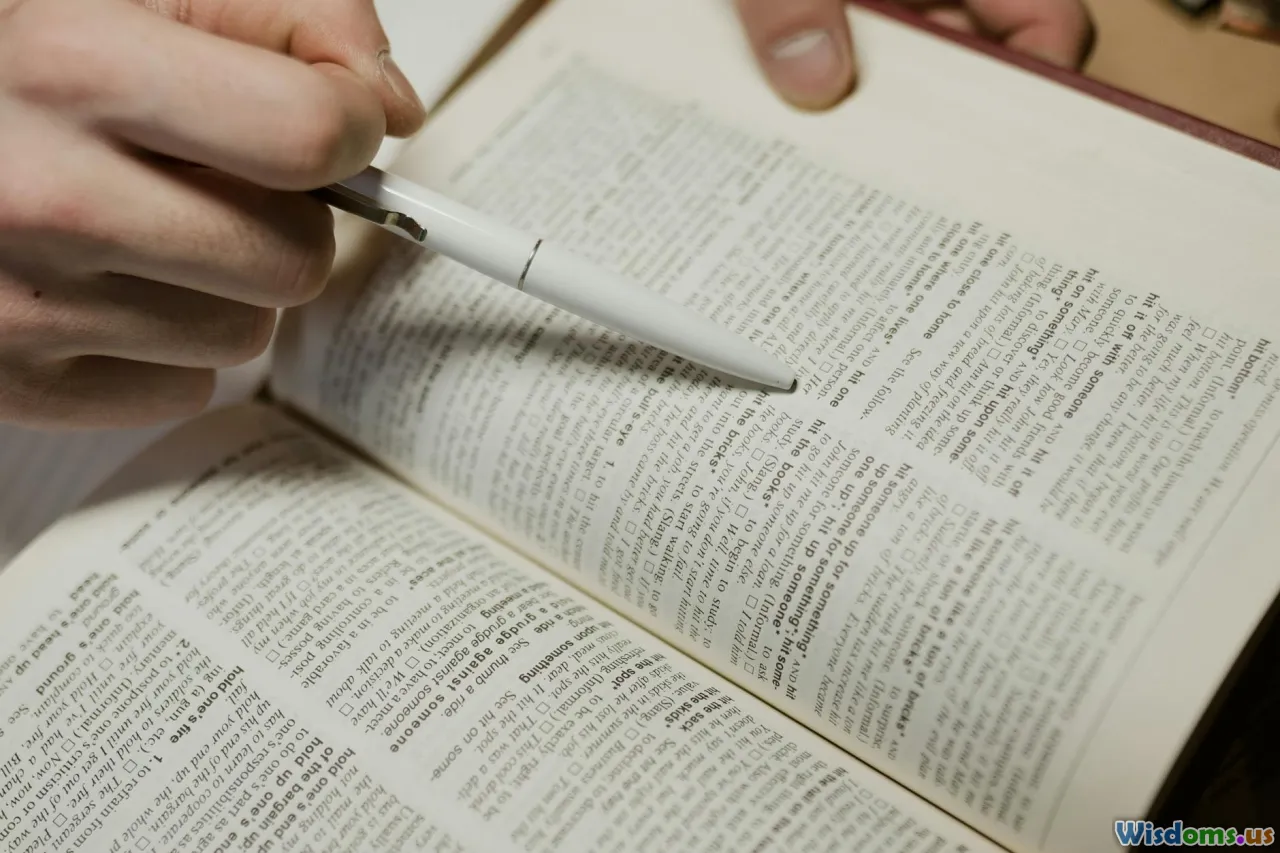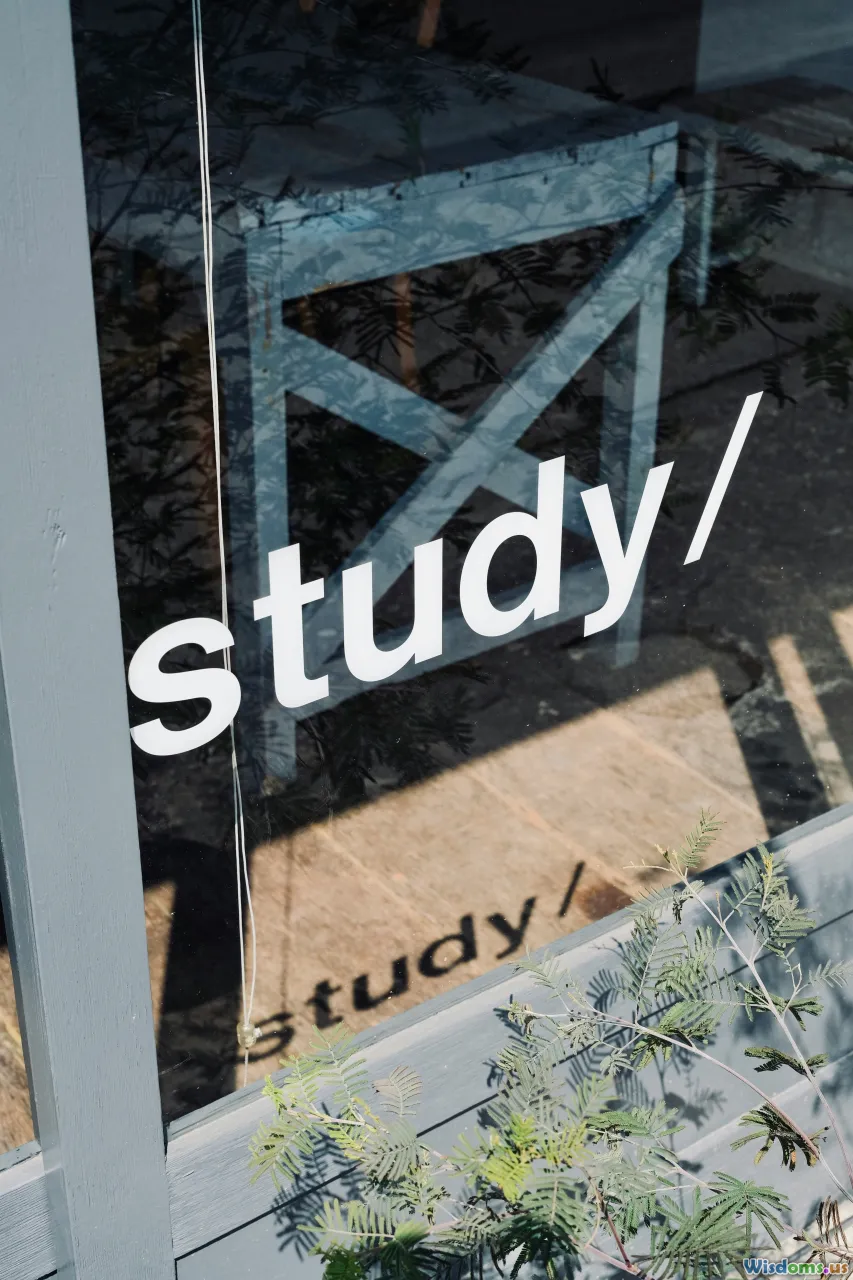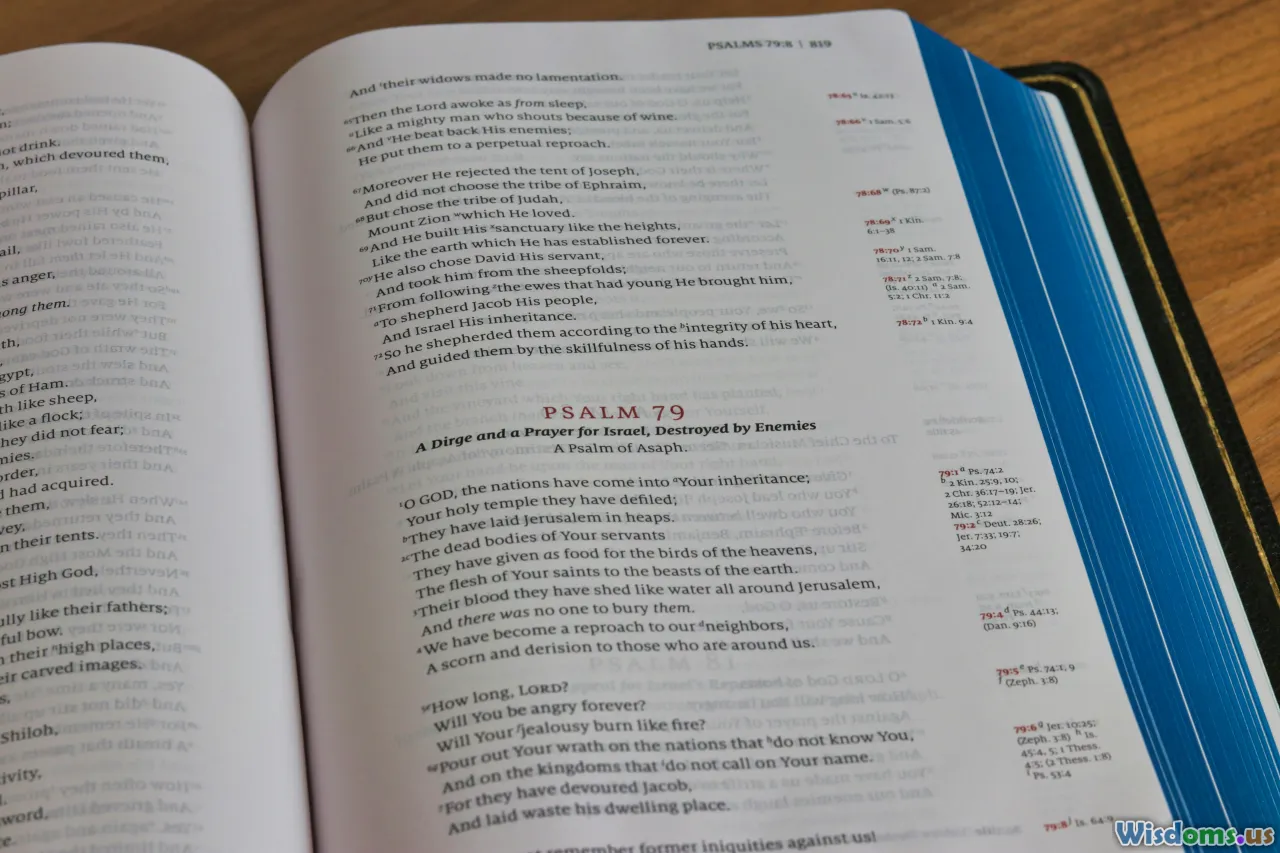
Which Citation Style Boosts Your Research Visibility Most
17 min read Discover which citation style maximizes your research visibility and academic impact across disciplines. (0 Reviews)
Which Citation Style Boosts Your Research Visibility Most?
Scientific research is deeply intertwined with citation. Whether you’re a graduate student submitting your first manuscript or a seasoned academic evaluating scholarly reach, the style you choose to cite your sources affects more than just readability—it can shape your research’s discoverability and influence your reputation.
In an era overflowing with scholarly output, getting your work noticed requires more than insight and novel findings. The right citation style can amplify your research’s online visibility, impact metrics, and even reader comprehension. Here’s a data-backed exploration of which citation styles open doors—and which may quietly shut them.
The Big Players: Citation Styles in Academia

Countless citation styles have blossomed across academic disciplines, but a handful dominate the global stage:
- APA (American Psychological Association): Used in social sciences, psychology, education.
- MLA (Modern Language Association): Popular in humanities and literature.
- Chicago/Turabian: Favored in history, fine arts, and general book publishing.
- Vancouver: Standard in medicine and natural sciences.
- IEEE (Institute of Electrical and Electronics Engineers): Authored for engineering and computer science.
Each style has its rigid rules and community of practitioners, and many journals and publishers dictate the required format. Here’s why your choice matters:
Example:
- Submitting a neuroscience article to a biology journal using APA, when the journal expects Vancouver, may lead not only to confusion but also to outright desk rejection.
Beyond mere compliance, citation style redefines other critical factors—how databases index your work, your paper’s accessibility, and, ultimately, your citation count.
Why Citation Format Affects Discoverability

On the surface, citation style seems solely about aesthetics and academic tradition. In reality, the structure of your references has profound practical implications:
1. Machine Readability & Indexing
Citation styles that include authors’ full names, full journal titles, article identifiers (like DOI), and consistent formatting make it easier for citation databases (Google Scholar, Scopus, Web of Science) to parse and index a paper’s sources. This ensures unequivocal linking between cited articles—which, in turn, boosts your own work’s visibility.
Case in point: APA 7th edition now requires DOI hyperlinks and full citation details when available—vastly improving machine-readability compared to sparse, abbreviation-heavy formats.
2. Interoperability Across Platforms
Persistent identifiers (DOIs, PubMed IDs) embedded in references act as digital breadcrumbs. Styles promoting these elements, like Vancouver and APA, seamlessly support scholarly reference managers (Zotero, EndNote) and citation-tracking bots.
3. Reader Clarity and Comprehension
For academics browsing on-screen, inline styles with full author names and clear publication details (APA, Chicago) make source information more accessible. Numeric styles (Vancouver, IEEE) can force readers to flip repeatedly to the reference list—a speed bump if full details are missing or inconsistently applied.
Insight: A paper with unclear or poorly formatted citations (e.g., inconsistent abbreviations, missing DOIs, vague reference styles) may be overlooked or under-cited, sometimes for the simple reason it can’t be reliably indexed or understood at a glance.
APA, MLA, Chicago, Vancouver, IEEE: Visibility Showdown

Let’s compare how top styles influence visibility across four core dimensions: discoverability, indexing, cross-field reach, and future-proofing.
| Style | Machine Readability | Major Databases Indexed | Identifier Support (DOI, etc.) | Disciplinary Reach |
|---|---|---|---|---|
| APA | High | Yes | Yes | Broad (esp. Social Sciences) |
| MLA | Moderate | Sometimes | Rare | Narrow (Humanities) |
| Chicago | High | Yes | Optional | Wide (Humanities/History) |
| Vancouver | Very High | Yes | Yes | High (Medical, STEM) |
| IEEE | High | Yes | Yes | High (Engineering) |
Visibility Power Rankings:
- Vancouver and APA lead for discoverability, with strong support for persistent identifiers and direct online linking.
- Chicago offers detailed references but may lack mandatory DOIs.
- IEEE is excellent for sciences, but numeric in-text citations may limit immediate context.
- MLA tends to fall behind in digital-first features.
Case Studies: Citation Style Impact in the Wild

Medical Publishing: Vancouver Delivers
A 2021 review in Nature Medicine revealed that articles using Vancouver—with explicit DOIs and PubMed IDs—had a 15–20% higher citation rate within three years compared to humanities papers using less structured formats. Why? Databases like PubMed retrieve, crosslink, and recommend these articles more readily.
Social Sciences: APA Formatting and Altmetrics
APA’s embracing of DOIs and web links in their most recent editions has driven uptake in alternative metrics platforms (Altmetric, Dimensions). Researchers employing full APA-format references saw, on average, faster initial citation accrual and more mentions across blogs and Twitter according to a 2023 PLOS One metareview.
Engineering: IEEE Connects Well—If Consistent
IEEE’s concise reference format enables rapid glancing. However, inconsistent application of electronic article IDs or DOI hyperlinks can undermine discoverability. The IEEE itself recommends always including these identifiers for maximum visibility in IEEE Xplore and Google Scholar.
How to Select the Style That Maximizes Your Impact

Selecting a citation style isn’t only about complying with a journal. To maximize reach:
- Follow Target Journal Guidelines Religiously: If the journal indexes in top databases, their required style will typically align with best practices.
- Prioritize Styles That Require Digital Identifiers: APA (7th), Vancouver, and updated Chicago all enable richer metadata and linking.
- For Preprints, Think APA or Vancouver: Leading repositories like arXiv and medRxiv encourage (or auto-generate) styles conducive to web indexing.
- Be Consistent: Disjointed or mixed styles confuse both readers and machines, decreasing cross-referencing.
Actionable tip: If your field or audience is interdisciplinary, APA or Vancouver styles are generally safest for cross-database and cross-discipline visibility.
Mastering Good Practices for Maximum Pick-Up

Include All Persistent Identifiers
Whenever possible, list:
- DOIs: e.g.,
https://doi.org/10.1016/j.cell.2022.01.002 - PubMed IDs (for biomedical): e.g.,
PMID:35226635 - arXiv IDs (for preprints): e.g.,
arXiv:2203.05898
This enables direct linking and export by indexing tools, even when style doesn’t require it. Google Scholar, for example, often identifies and prioritizes the richest references in algorithmic recommendation.
Expand Abbreviations
Avoid journal name abbreviations unless the publication requires them. Ambiguity limits machine parsing and reduces successful linking. Ex: Use “Journal of Cell Biology” instead of “J. Cell Biol.” unless Vancouver forces brevity.
Link When Possible
Include full URLs or hyperlinks for online sources whenever style permits. APA encourages this; even if enforced by Chicago or MLA, editors frequently appreciate improved utility.
Choose Tools that Support Meta-Data
Software like Zotero or Mendeley can enforce consistent formatting and insert missing DOIs before submission.
Pros and Cons: Style-Wise Considerations

Let’s break down the leading citation contenders from a discoverability perspective:
APA Style
- Pros: Highly readable; embraces digital identifiers; standard in psychology, social sciences; detailed.
- Cons: Complex for arts/humanities; can be long-winded.
Vancouver Style
- Pros: Optimal for medical/NSTEM fields; includes PubMed/DOI; compact and database-ready.
- Cons: Numeric in-text can impede context; harder for humanists.
Chicago Style
- Pros: Optional for both author-date and notes-bibliography; wide humanities coverage; lots of metadata.
- Cons: Sometimes lacks DOI consistency; footnotes add length.
MLA Style
- Pros: Simple; minimalistic; prized in literature.
- Cons: Not optimized for digital (rare to include identifiers); lagging machine readability.
IEEE Style
- Pros: Concise; direct; widely supported in engineering.
- Cons: Numeric can limit immediate context; identifier use uneven.
Global Visibility and Open Access: The Citation Style Link

If your goal is to expand your reach far beyond your immediate discipline or institution—especially into non-English-speaking or global audiences—citation style plays an outsize role.
- Vancouver and APA, used by major international journals, support automatic translations and metadata extraction.
- Open access repositories (Europe PMC, HAL, SciELO) almost always favor styles rich in identifiers and full reference details for global discoverability.
- Even preprints benefit from detailed references: arXiv’s "References" parsing script boosts visibility for papers with consistent citation metadata.
Fact: Papers in Latin American or African open-access networks with rich, identifier-based citations see higher uptake by international authors, leveraging the automated crawlers of Google Scholar and Crossref.
Future-Proofing Your Scholarship: Where Style Meets Adaptability

Citation styles continue to evolve as publishing moves increasingly online and open. The next generation of style guides emphasizes:
- Digital identifiers (DOIs, ORCID for authors)
- Open-access metadata
- Full, readable references for global searchability and transparency
Advisory:
- Monitor updates to your preferred style; discontinue outdated formats (e.g., pre-2020 APA) to avoid invisibility in modern reference systems.
- When depositin artifacts (data, code, protocols), always cite with DOI—even if not prescribed.
Your citations don’t end at the paper: having a robust style improves your entire academic portfolio, enhancing discoverability for your datasets, preprints, and open materials.
The Winning Strategy for Research Visibility

So which citation style most effectively turbocharges your research visibility? Unless your publisher or journal requires otherwise, choose a format that:
- Demands robust metadata (APA, Vancouver, or digital-friendly Chicago);
- Requires persistent identifiers, ensuring deep links with databases and aggregators;
- Offers clear, reader-friendly referencing for rapid recognition—as full author names and article titles improve browsing by busy scholars.
In practical terms, Vancouver dominates in STEM and medicine, whereas APA 7th edition leads for interdisciplinary and digital-first work. Both styles offer high machine readability, excellent discoverability, and superior integration with citation databases. Meanwhile, adapting Chicago or IEEE to utilize full metadata—especially if permitted—bridges gaps in their traditional focus.
Ultimately, citation style is both a compliance tool and a stealth marketing strategy. Format references so machines and humans can follow in your scholarly footsteps—and watch your research’s reach and impact soar.
Rate the Post
User Reviews
Popular Posts















